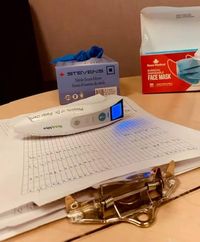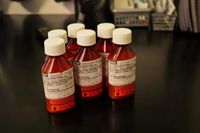Every day for the past year, since the novel pandemic, I have been monitored for COVID-19 before being allowed to enter into the Dr. Peter Centre. A nurse will very kindly but firmly, go through the new normal protocol. They will ask me if I have experienced any symptoms, have I been around anyone with COVID-19, have I travelled outside of Canada, and so on. Then take my temperature, 36.4 degrees is where I am most days. As a front-line health organization, we have gone to great lengths to ensure that each and every staff member is free from COVID-19 symptoms. Beyond screening, we recognize the importance of keeping staff healthy overall – physically, mentally, and emotionally. But the weight of the pandemic is significant and this daily grind, compiled by the recent “discoveries” of the residential school children, environmental disasters, mental health issues and a deadly overdose crisis has an effect of resurfacing past trauma and triggers.
“But the weight of the pandemic is significant and this daily grind, compiled by the recent “discoveries” of the residential school children, environmental disasters, mental health issues and a deadly overdose crisis has an effect of resurfacing past trauma and triggers.”
In response to the alarming increase in overdose deaths by a poisoned drug supply, more comprehensive, effective, and quality research has taken place, and the harm reduction sector has grown at a massive pace. It sometimes feels very slow but if we stop and reflect on what has actually happened – it is incredible. There have been amazing and innovative successes: thousands of lives have been saved; Overdose Prevention Sites and Safe Consumption Sites are opening across the country; there’s increased visibility, focus, and discussions about harm reduction and safe supply; more financial and human resources; greater ideas and synergies amongst individuals, organizations, and governments. There have also been frustrations, barriers, and set-backs: inconsistent governmental support; increased competition for scarce resources; stigma & discrimination for people who use drugs and those living with HIV; increased racism and unforeseen organizational challenges. Our sector is simultaneously vibrant, chaotic, inspiring and fragile – we are driven by passion and a deep-seated emotional need to take care of others. But who is taking our temperature on a regular basis? How are we ensuring our physical and mental health and well-being as a sector is intact? How do we ensure we are taking the measures necessary to keep our sector healthy mentally and emotionally on a daily basis?
“Our sector is simultaneously vibrant, chaotic, inspiring and fragile – we are driven by passion and a deep-seated emotional need to take care of others. But who is taking our temperature on a regular basis?”
I don’t pretend to have answers for any of this, but I do know that it will be increasingly challenging for all of us. Our only hope of success is a strong sector of diverse, healthy, committed, and most importantly, passionate individuals. I do know that I, like all of us, have a small part to play and that I must actively commit to positive change. So, for today, I am making three commitments:
- Taking my temperature and to keep myself centred and healthy, so I can fully show up and participate;
- Monitoring the Dr. Peter Centre for signs of organizational issues or ‘dis-ease’; and
- Leading with integrity, authenticity and from a place of love.




